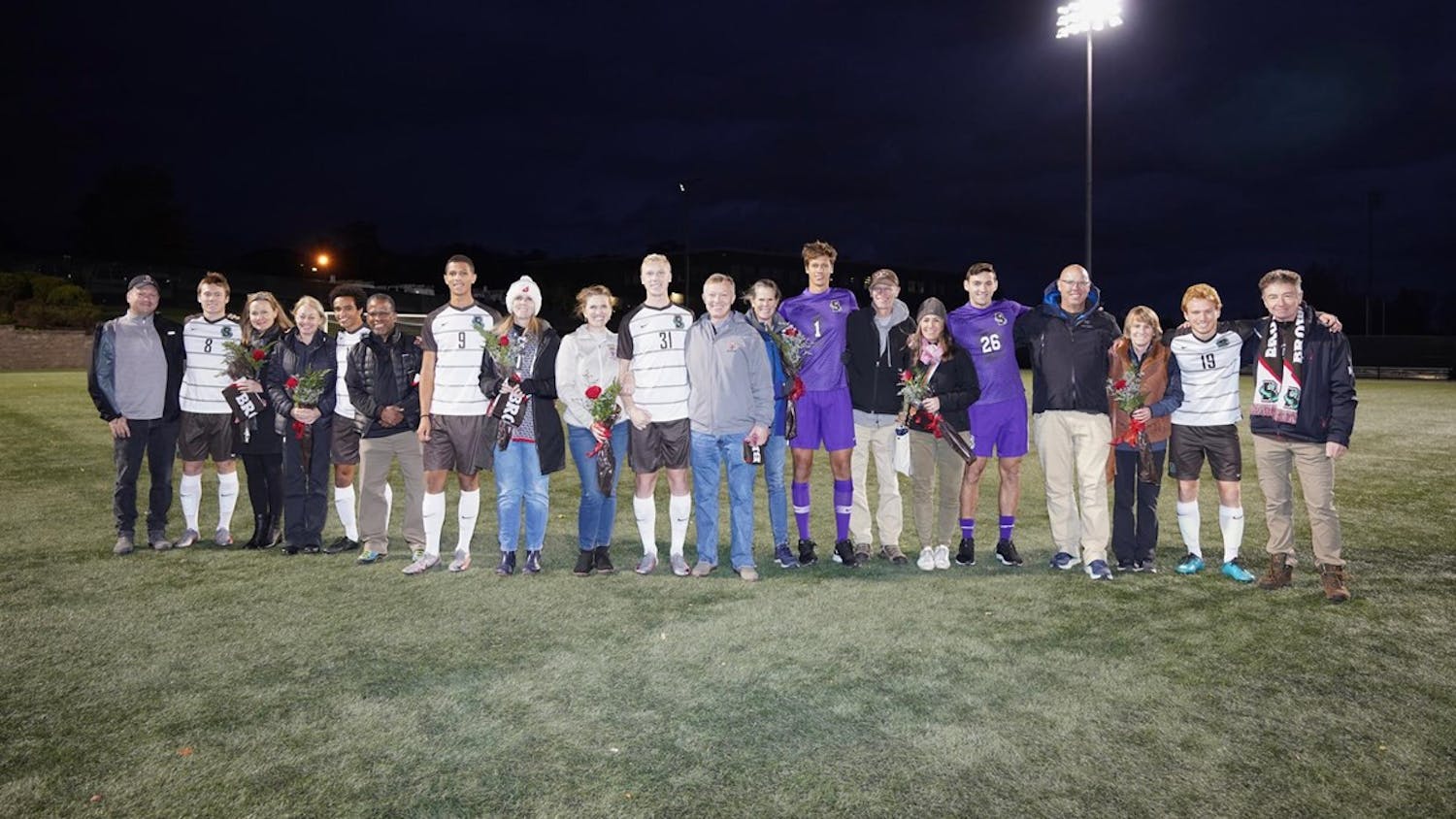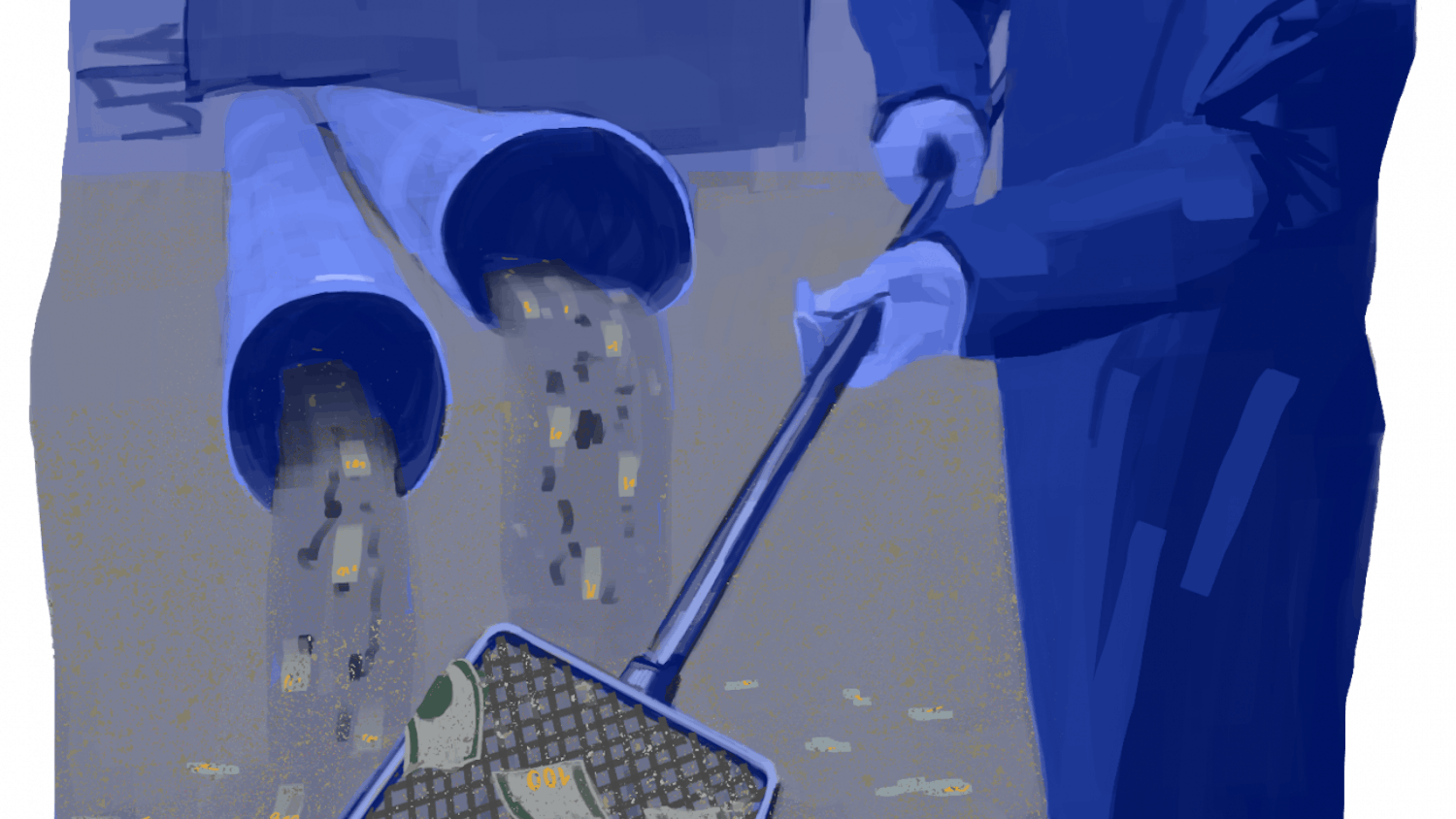At the University of St. Andrews, students only had two options for lunch, each slopped on their trays, said Catherine Gross ’13 — the cafeteria line was the size of the Sharpe Refectory’s salad bar.
“You couldn’t go back for seconds,” she added, “not that you would want to.”
After transferring to Brown, Gross said she finds no complaints on her plate.
“You appreciate things so much more when you know what it’s like somewhere else,” she said.
About 75 students transferred to the University this fall, said Associate Dean of the College Carol Cohen. About 75 to 150 students transfer to the University every fall, she added.
With educational backgrounds ranging from universities overseas to community colleges, transfer students bring new perspectives to the University’s table. Their experiences have different flavors but share one key ingredient: “a willingness to take risks,” Gross said. “Moving is a process that takes work, a lot of time and money. To do it, you have to know what you want.”
Finding a new recipe
A variety of reasons rouse students to crack open college brochures and reacquaint themselves with the Common Application.
Many feel they made the wrong choice when they applied to college the first time around. “When you’re 17, you don’t really know what you want,” Gross said.
Gross’ romantic ideas about attending college in the United Kingdom were crushed by the reality of her regimented academic experience. Even though St. Andrews is one of the United Kingdom’s more liberal institutions, it was still difficult for Gross to take classes outside her major, she said.
“Academically, I realized I wanted choice,” Gross added. “I didn’t know that when I applied to schools originally.”
After one overnight visit at Swarthmore College, Lily Goodspeed ’13 thought she had found the right college. She applied early decision to escape the stressful application process, without really knowing what she wanted, she said.
“After a few months in, I hadn’t found people that I clicked with,” said Goodspeed, a former BlogDailyHerald and Post- editor. Troubled by the school’s small size, she filled out transfer applications, a secret she kept from everyone except her best friend and the administration. “I felt alienated, because everyone there was so excited about the place,” she said.
Goodspeed was originally set on transferring to Columbia, but her mother encouraged her to check out Brown, she said. All the schools Goodspeed considered had “smart people,” but the way Brown students approached intellectualism caught her attention, she said.
“At Brown, school and life don’t have these distinct lines — I liked that people were into political activism and more laid back,” Goodspeed said.
While walking down the streets of Boston University, Louisa Kellogg ’14 said she rarely saw familiar faces among pedestrians. “It was too big for me.”
Frustrated by unchallenging classes and a confining social scene where one was either “the kind of person who goes out or stays in every night,” Kellogg visited a high school friend at Brown and felt at home, she said.
For Charlie Powell ’13, Bard College at Simon’s Rock — a self-described “early” college that enrolls high school students after the 10th and 11th grades — was a “nice claustrophobic environment” where “the party scene consisted of “going to dorm rooms and maybe drinking a beer,” he said. “I was one of three physics majors, so I was under the microscope all the time,” he said.
Powell enjoyed the closeness of his peers and faculty but felt he needed to branch out from Bard’s “caring environment,” he said. Powell transferred to Brown hoping to take advantage of laboratory science opportunities, but he found himself captivated by Russian language, history and literature, which he currently studies in graduate school at Stanford University.
Finding friends
On Gross’ move-in day, three feet of snow on the ground left her and other transfers wondering whether they could break the ice with their new classmates, she said. But orientation events warmed the chilly January 2011 day.
“Orientation was well-structured and slightly awkward, but they didn’t make you feel like babies,” Goodspeed said.
“Transfer counselors did a great job organizing parties,” Gross said. “They really bonded the group.”
Powell said the transfer bubble was “pretty thick” in the beginning. But Goodspeed said she found she could pop the bubble by doing “all the freshman things,” even if doing so meant entering awkward situations.
Homework also helped Goodspeed make friends — “never underestimate spending seven hours in the SciLi with someone,” she said.
Kellogg pointed to extracurricular activities as a method for meeting new people.
“I made most of my friends through comedy stuff,” she said.
“The college experience is about getting to know as many people as possible, trying new things and finding what you are passionate about — you can’t do that drunk on your roommate’s floor,” said Dylan Platt ’15, who counts the mock trial team, Brown Political Review, Brown Motion Pictures, Shakespeare on the Green and the University Wind Symphony among his many activities. Many transfer students become club presidents and extracurricular triathletes because they “feel the time crunch,” Platt added.
But students do not always find friendships in classes or club meetings. During her first semester, Goodspeed ran into a friend of a friend at a party who was “really drunk and crying,” she said. “When I saw her in the Blue Room the next day, she didn’t remember me,” she added. “I was so awkward.”
That girl is now one of her best friends, Goodspeed said.
By the end of her senior year, Goodspeed was so integrated into the Brown community that she felt her experience differed little from that of her non-transfer classmates, she said. In some ways, her sophomore debut was advantageous because everyone spends freshman year trying to figure out who they are, she said. “I found my friends after they found themselves.”
Making the leap
Transfer students face challenges ranging from academic requirements to class size as the enter a new academic arena.
Transfers have to “bring themselves up to speed with the rest of the class” in order to be successful, which often means learning rules and strategies different from those of their previous institutions, said David Scofield ’13, who transferred from Indiana University Bloomington.
Students who transfer their junior years “really have to hit the ground running,” Cohen said. Platt, who transferred from Columbia State Community College, said he feels bogged down by requirements and is unable to pursue some concentrations that interest him. “I knew there would be hoops to jump through, but I thought there would be more academic freedom,” he added.
Brown’s size can be overwhelming for students who previously attended smaller colleges.
“It was easy to take the classes you wanted at Swarthmore. Shopping period at Brown is a bit more stressful,” Goodspeed said.
After attending a college with 370 students, Powell said waiting in line for office hours and having classes with more than five people felt strange.
These difficulties are all part of becoming an adult, Cohen said.
“That shift doesn’t happen automatically,” she added. “People have to learn these skills, and my job is to help them learn.”
Food for thought
Even after graduation, students said they maintained connections made on College Hill. Gross and Goodspeed each ended up living in New York with friends who also transferred, they said.
“Most of my friends that I live in the same neighborhood with are all transfers,” Goodspeed said.
The Brown diploma has also opened doors for students. If it were not for her Brown experience, Gross said she would not be sitting at a desk at NBCUniversal in New York, she said. A Brown alum helped Gross get an internship with the company that turned into a job after graduation, she said.
“Every time I get a Brown Alumni Magazine, I see someone I know or a professor I know,” Powell said. “I didn’t realize how useful and embracing the Brown alumni community was until I was (part of it).”
ADVERTISEMENT




